Single Species
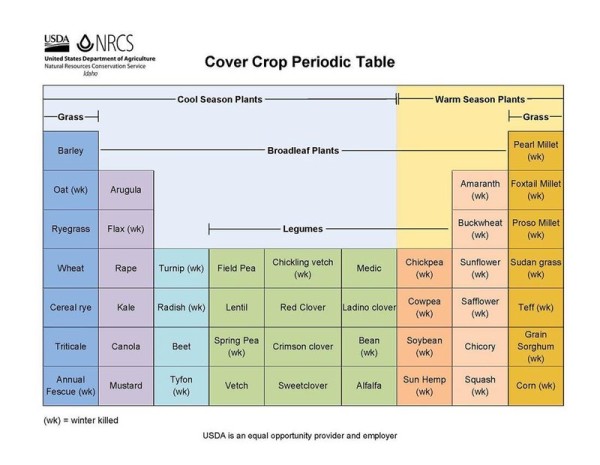
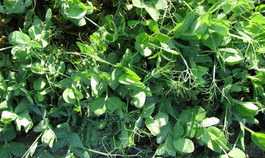
A quick growing, excellent source of Nitrogen which provides very good erosion control and breaks down quickly. Winter peas are also very good at loosening topsoil and reducing weeds and disease. Added bacterial inoculant will maximize nitrogen fixation. Field peas produce abundant vining forage and contribute to short-term soil conditioning.
Succulent stems break down easily and are a quick source of available N. Field peas grow rapidly in the cool, moist weather. Under a long, cool, moist season during their vegetative stages, Austrian winter peas produce more than 5,000 lb.dry matter/A. Austrian winter peas are top N producers, yielding from 90 to 150 lb.N/A, and at times up to 300 lb.N/A. (3)
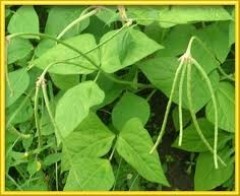
Cowpeas are the most productive heat adapted legume used agronomically in the U.S. Cowpeas protect soil from erosion, smother weeds and produce 100 to 150 lb. N/A. Dense residue helps to improve soil texture. Cowpeas nodulate profusely, producing an average of about 130 lb.N/A, but with optimum conditions can achieve more than 300 lb. N/A. Cowpeas have “extra floral nectaries” that attract beneficial insects, including many types of wasps, honeybees, lady beetles, ants and soft-winged flower beetles. Plants have long, slender round pods often borne on bare petioles above the leaf canopy. (3).
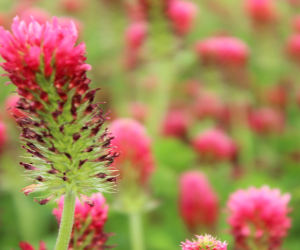
With its rapid, robust growth, crimson clover provides early spring nitrogen for full-season crops. It is a top choice for short-rotation niches as a weed suppressing green manure. Its spectacular beauty when flowering keeps it visible even in a mix with other flowering legumes. Whether you use it as a spring or fall N source or capitalize on its vigorous reseeding ability depends on your location. Growers choose winter annual crimson clover to provide a strong, early N boost. Its N contribution is 70 to 150 lb./A. (3)
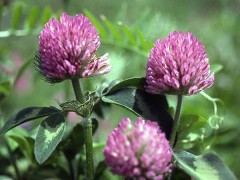
Red clover is a dependable, low-cost, readily available workhorse that is winter hardy in much of the U.S. (Hardiness Zone 4 and warmer). Easily overseeded or frostseeded into standing crops, it creates loamy topsoil, adds a moderate amount of N, helps to suppress weeds and breaks up heavy soil. Its most common uses include forage, grazing, seed harvest, plow down N and, in warmer areas, hay. It’s a great legume to frost seed or interseed with small grains where you can harvest grain as well as provide weed suppression and manage N.(3)
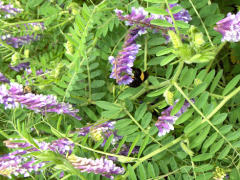
Few legumes match hairy vetch for spring residue production or nitrogen contribution. Widely adapted and winter hardy through Hardiness Zone 4 and into Zone 3 (with snow cover), hairy vetch is a top N provider in temperate and subtropical regions. The cover grows slowly in fall, but root development continues over winter. Growth quickens in spring, when hairy vetch becomes a sprawling vine up to 12 feet long. Field height rarely exceeds 3 feet unless the vetch is supported by another crop. Its abundant, viney biomass can be a benefit and a challenge. The stand smothers spring weeds, however, and can help you replace all or most N fertilizer needs for late-planted crops. Hairy vetch can improve root zone water recharge, and improves topsoil tilth, creating a loose and friable soil structure.(3)
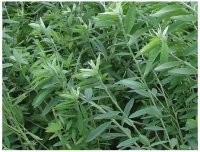
Sunn hemp is an erect, branching, annual legume. It is a rapid, vigorous grower, achieving a height of 4 to 6 feet in 60 days, when grown under favorable conditions. Sunn Hemp is recommended as a rapid-growing leguminous green manure crop to be included in rotation with vegetable, ornamental, and other plants to add nitrogen and organic matter, to suppress weeds, to control erosion, and to reduce root-knot nematodes. Sunn Hemp can produce over 145 pounds of actual nitrogen per acre at 60 days of growth. It can produce organic matter yields of as much as three tons per acre.
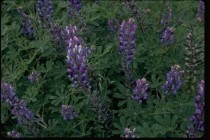
The main use for this crop is to increase organic matter and supply nitrogen to next spring’s crops. Blue Lupin is adapted to acid soils, however soil pH up to 8 or slightly above will not inhibit its growth or health.
Lupin is fairly efficient at extracting phosphorous from the soil. It produces very tiny roots and they produce citric acid that buffers the immediate environment on the roots and they actually raise the pH and make phosphorus available. They also have a deep taproot that mines for subsoil Potash. Bad fertility does not hurt this crop.
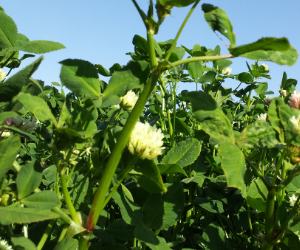
Balansa Clover is a small-seeded annual legume with superior reseeding potential compared with other legumes. Well-adapted to a wide range of soil types, balansa performs particularly well on silty clay soil with a pH of about 6.5. Established stands tolerate waterlogging, moderate salinity, and soil pH from 4.5 to 8.0. Balansa clover is open pollinated. Flowers vary from white to pink and are attractive to bees. Ungrazed, it grows up to three feet high and produces thick hollow stems that are palatable and of good feed value. It becomes more prostrate when grazed. Balansa clover seed is quite small, so planting only 5 lb. /A gives a dense stand.
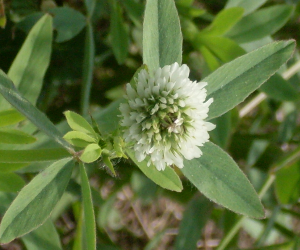
A fast-growing summer annual, berseem clover can produce up to 8 tons of forage under irrigation. It’s a heavy N producer and the least winter hardy of all true annual clovers. This makes it an ideal winterkilled cover before corn or other nitrogen-demanding crops in Corn Belt rotations. Berseem clover draws down soil N early in its cycle. Once soil reserves are used up, it can fix 100 to 200 lb. N/A or more and is a high value plant for native and honey bees. It establishes well with an oat nurse crop, making it an excellent cover for small grain, corn, soybean rotations in the Midwest.
White clover is one of the most important perennial pasture legumes. It is highly palatable and nutritious forage for all classes of livestock and most wildlife and is a high value plant for native and honey bees. White clover is commonly planted with orchardgrass, ryegrass, bromegrass, or tall fescue. Large or Intermediate white clover planted with orchardgrass produces the premier forage combination for intensive grazing systems in the Northeast and grows tall enough to be harvested for hay, silage, and green chop. Common white clover (Dutch White) seldom grows tall enough to be harvested for hay or silage, but is an excellent companion for lawns, paths or other high traffic grass ways.
Sweet Clover, Yellow:
Melilotus officinalis Lam. , White: M. alba Medik
Broadly speaking, sweet clover is an annual to biennial forb reaching 5 feet (1.5 m) in height. Prior to World War II, sweet clover was an important green manure crop. Its ability to grow rapidly and fix nitrogen made it an ideal green manure. Interest in sweet clover for green manure dwindled rapidly after World War II when commercial fertilizers became readily available. When used for green manure, plowing under sweet clover residue increases soil nitrogen content when compared to just harvesting top growth for forage. Rapid growth and easy establishment make sweet clover a popular choice for reclamation seedings. Additionally it works well in seed mixtures for road cuts, post-fire, mine spoils and other disturbed sites. The large taproot increases aeration and water absorption by opening the subsoil. Sweet clover flowers are highly attractive to bees, butterflies and beneficial insects.
Woolypod Vetch, Vicia villosa ssp. varia ;
Cahaba White Vetch, Vicia sativa × Vicia cordata
Woollypod vetch is an introduced, self-seeding, cool season annual legume similar in appearance to other annual and perennial vetches. Woollypod vetch may be used as a substitute for purple vetch in cover crop and green manure seedings. Because it matures relatively early and reseeds well, Woollypod vetch can be used where a perpetuating annual cover is desired. Cahaba Vetch was bred to be an excellent forage in the east and southern parts of the US during the winter. In the transition zone it has shown good winter hardiness. Cahaba vetch is a summer legume used to follow with wheat or bypass planting. Both Woolypod and Cahaba vetch are cold tolerant, but not winter hardy. They will die when temperatures fall below 30F.
Chickling Vetch, Lathyrus sativus
Chickling Vetch is an annual legume developed as a fertilizer alternative to supply green manure Nitrogen for both organic and conventional growers. In only 8-10 weeks of growth an average of 80-100 lbs N/acre can be produced. This plant is drought tolerant, moisture efficient, resistant to many insects and diseases, and suitable for a variety of climates and soil types. It has been found to markedly enhance all major components of soil biological quality and boost soil fertility.
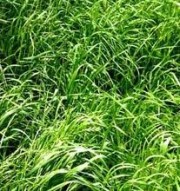
If you want to build soil without investing much in a cover crop, consider annual ryegrass. A quick-growing, non-spreading bunch grass, annual ryegrass is a reliable, versatile performer almost anywhere, assuming adequate moisture and fertility. It does a fine job of holding soil, taking up excess N and outcompeting weeds. Ryegrass is an excellent choice for building soil structure in orchards, vineyards and other cropland to enhance water infiltration, water-holding capacity or irrigation efficiency. It can reduce soil splash on vegetable crops and small fruit crops, decreasing disease and increasing forage quality. You also can overseed ryegrass readily into corn, soybeans and many high-value crops.(3)
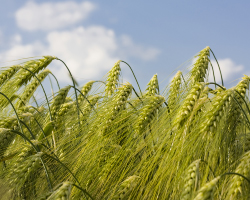
The hardiest of cereals, rye can be seeded later in fall than other cover crops and still provide considerable dry matter, an extensive soil-holding root system, significant reduction of nitrate leaching and exceptional weed suppression. Inexpensive and easy to establish, rye outperforms all other cover crops on infertile, sandy or acidic soil or on poorly prepared land. It is widely adapted, but grows best in cool, temperate zones. Taller and quicker-growing than wheat, rye can serve as a windbreak and trap snow or hold rainfall over winter. It overseeds readily into many high-value and agronomic crops and resumes growth quickly in spring, allowing timely killing by rolling, mowing or herbicides.(3)
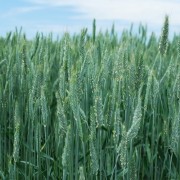
Triticale is a cereal crop developed by human intervention from crosses between wheat and rye. It has been developed to incorporate the high yield potential and quality of wheat and the adaptability of rye and is adapted to a wide range of soil types and environments. Triticale has an aggressive root system that binds light soils better than wheat, barley or oats. Under ideal conditions, researchers have found that triticale can out-yield wheat and barley and sometimes oats. Triticale is well established as an ingredient in livestock rations.
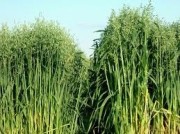
Oats provide a quick, weed-suppressing biomass, take up excess soil nutrients and can improve the productivity of legumes when planted in mixtures. Oats are excellent at weed suppression and very good at minimizing erosion due to its fibrous root system. Oats are allelopathic which means it acts as a natural herbicide which can slow germination of weeds. Allow ground to rest for three weeks after killing oats to minimize effect on intended crops. An upright, annual grass, oats thrive under cool, moist conditions on well-drained soil. Plants can reach heights in excess of 4 feet. With good growing conditions and sound management (including timely planting), expect 2,000 to 4,000 pounds of dry matter per acre from late-summer/early fall-seeded oats. Oats take up excess N and small amounts of P and K when planted early enough. Late-summer plantings can absorb as much as 77 lb.N/A in an eight- to ten-week period. (3)
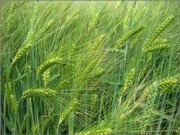
Inexpensive and easy to grow, barley provides exceptional erosion control and weed suppression in semi-arid regions and in light soils. It also can fill short rotation niches or serve as a topsoil protecting crop during droughty conditions in any region. It is more salt tolerant than other small grains and can sop up excess subsoil moisture to help prevent saline seep formation. It’s a fine choice for reclaiming overworked, weedy or eroded fields, or as part of a cover crop mix for improving soil tilth and nutrient cycling in perennial cropping systems in Hardiness Zone 8 or warmer.(3)
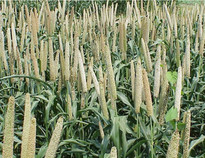
Pearl millet is a warm season annual grass that is best known in the U.S. as a forage crop. Including the grain head, the plant will typically be about 4 to 5 feet tall, although height can vary from 3 to 6 feet depending on variety and growing conditions. Pearl millet has rapid growth and root development, sending extensive roots both laterally and downward into the soil profile to take advantage of available moisture and nutrients. Pearl millet is a strong nitrogen scavenger and prevents erosion.(6)
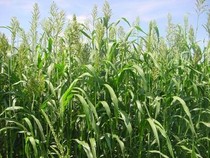
Sorghum bicolor x S. bicolor var. sudanese
Sorghum-sudangrass hybrids are unrivaled for adding organic matter to worn-out soils. These tall, fast-growing, heat-loving summer annual grasses can smother weeds, suppress some nematode species and penetrate compacted subsoil if mowed once. Seed cost is modest. Followed by a legume cover crop, sorghum-sudangrass hybrids are a top choice for renovating over farmed or compacted fields. Sorghum-sudangrass grows 5 to 12 feet tall with long, slender leaves, stalks up to one-half inch in diameter and aggressive root systems. These features combine to produce ample biomass, usually about 4,000 to 5,000 lb. DM/A. (3)
BMR Grazing Corn, Zea Mays
The BMR Grazing corn is an open pollenated corn with expressed Brown Mid Rib (BMR) trait. This is not a GMO trait. This corn variety has been developed to have superior palatability and digestibility compared to conventional corn, and is especially a good fit for warm season grazing mixtures or green chop. Due to its relative short maturity (90 days) it is a good fit for double crop forage after cereal rye or triticale silage harvest. Companion planting with soybean, cow pea, or Sunn Hemp will improve feed value grazed or mechanically harvested.
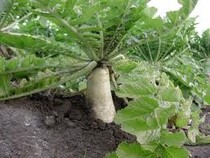
The radish is an upright cool season annual that grows 12 to 18 inches tall. The thick, white taproot will have a rosette of leaves that develop quickly and shade out weeds. The radish is an excellent Nitrogen scavenger and soil improver. The thick tuber and long taproot will penetrate hard soils and bring additional nutrients up from the subsoil. The radish will winter kill with several days of temperatures below 25F. The radish has natural bio fumigant properties, with the capability to suppress undesirable plants and insects. (7)
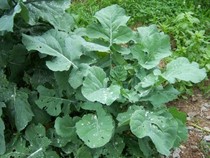
A member of the Brassica family, rapeseed is an upright cool season or winter annual broadleaf that grows 3 to 5 feet tall, has narrow leaves, yellow flowers, and a deep fibrous root system. Canola is a quick-growing Nitrogen scavenger (takes up and stores excess nitrogen) which is good at controlling erosion and choking out weeds and improving water infiltration by loosening the topsoil. It has bio fumigant properties, and will winter kill. (7)
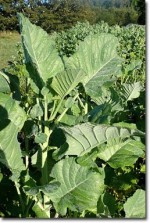
Used primarily for grazing, cover crop, and food plots. Planted at 2 pounds to the acre as a sole component, 1 pound in a mix. Planted in the spring or summer in all regimes. An upright brassica, it can reach heights of 24 inches. Vertical branches do not wilt and are resistant to decay. It has a taproot like rapeseed and other hybrid turnip that is useful for improving soil structure and water permeation.
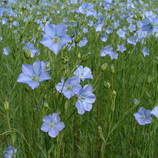
Flax is a broadleaf with very small, narrow leaves that are less than an inch long. Stems are branched near the base of the plant, with plants reaching 30 to 36 inches in height. The multiple stems or branches of a flax plant are slender and flexible, bearing attractive blue flowers. Flax has the same performance benefits of other grasses and grains, of quick germination and a highly fibrous root mass. Flax will take up excess N and other minerals, will winter kill and provide moderate to high amounts of organic matter back to the soil. (4)Flax provides excellent mulch for protection of erosion and improving water permeation during the winter and spring.
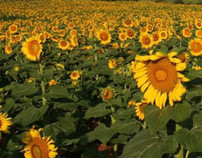
Sunflowers grow rapidly, producing large, rough leaves. If planted in early June, sunflowers will be in full bloom after about two months in early August. Current sunflower varieties reach an average of six feet in height, varying between five and seven feet depending on planting date and soil conditions. By adding sunflower to an existing crop rotation, pest problems such as corn borer or soybean cyst nematode can be reduced.
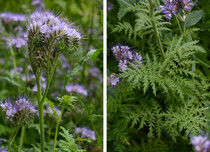
Phacelia is a versatile plant that is quick to grow and flower and grows well in dry soil. It does a good job of limiting nitrate leaching when planted in early fall. It winterkills at about 18°F. Phacelia is an herbaceous, non-leguminous, flowering annual in the Hydro-phyllaceae family. Height ranges from 6 to 47 inches. The foliage appears ferny, and the flowers are in flat-topped clusters in shades of purple or occasionally white. The benefit of Phacelia is its ability to quickly grow a dense and deep root system, sequestering available nutrients, and improving soil aggregation and pore volume. (5)
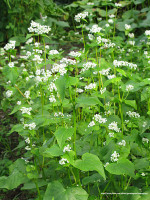
Buckwheat is the speedy short-season cover crop. It establishes, blooms and reaches maturity in just 70 to 90 days and its residue breaks down quickly. Buckwheat suppresses weeds and attracts beneficial insects and pollinators with its abundant blossoms. It is easy to kill, and reportedly extracts soil phosphorus from soil better than most grain-type cover crops. Few cover crops establish as rapidly and as easily as buckwheat. Its rounded pyramid-shaped seeds germinate in just three to five days. Leaves up to 3 inches wide can develop within two weeks to create a relatively dense, soil shading canopy. Buckwheat typically produces only 2 to 3 tons of dry matter per acre,but it does so quickly—in just six to eight weeks. Buckwheat residue also decomposes quickly, releasing nutrients to the next crop.(3)
Turnip, Brassica campestris, Rapaceum group
Turnip is a cool-weather crop and well adapted for the northern parts of the United States. Turnips have a small, white-fleshed root, often with the surface of the top half purple. Turnips can provide grazing at any time during the summer and fall depending on the seeding date. These crops maintain their forage quality, if not headed, well into the fall even after freezing temperatures and may be grazed in the Upper Midwest into November. Its flowers are attractive to native and honey bees as well as beneficial insects.
The information above is taken from many sources, including;
(1) “Winter Cover Crops for Kentucky Gardens and Fields”, Rasnake, M., Dunwell, W., and Weston, L.
University of Kentucky College of Agriculture, Bulletin ID-113.
(2) “Cover Crops for Home Gardens”, Rackham, R.L., and McNeilan, R.
Oregon State University Extension Service, Bulletin FS 304
(3) Managing Cover Crops Profitably 3rd Edition, Edited by Clark, A.
Sustainable Agriculture Network, ISBN 978-1-888626-12-4
(4) “Flax, A Crop from America’s Past with Renewed Potential”, Thomas Jefferson Agricultural Institute
(5) “Phacelia tanacetifolia : A brief overview of a potentially useful insectary plant and cover crop”, L. Gilbert.
Small Farm Success Project – Fact Sheet Number 2.12 p.
(6) “PEARL MILLET A New Grain Crop Option for Sandy Soils or Other Moisture-Limited Conditions”
Robert L. Myers, Ph.D. Published by the Jefferson Institute, Columbia, MO
(7) “Midwest Cover Crops Field Guide” Midwest Cover Crops Council

